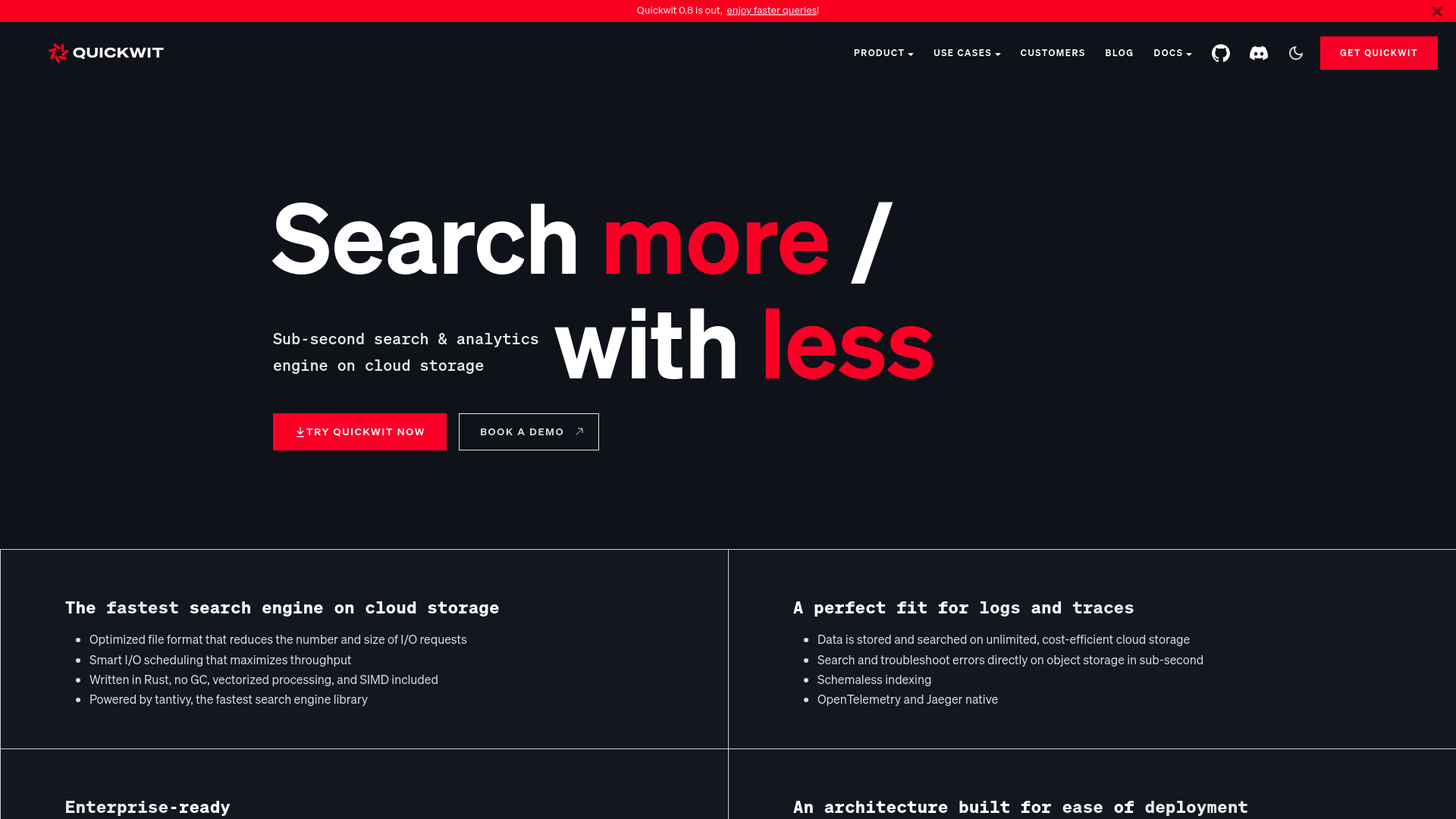Open Source Alternative to:
Repository activity:
Stars10,714
Forks501
Open Issues648
Last commit4 days ago
License:
Apache-2.0
Languages:
Get SOC2, ISO 27001 or HIPAA compliant in 4 weeks. Get started instantly, no sales calls, no upfront contracts.

Quickwit is a cloud-native, open-source search engine designed for sub-second search and analytics on cloud storage. It offers a robust alternative to traditional search technologies like Datadog, Elasticsearch, Loki, and Tempo, optimized for limitless data volumes with low query per second (QPS) requirements. Built on Rust and Tantivy, Quickwit ensures optimized CPU and processing power, executing queries directly on object storage for improved performance at a fraction of the usual cost.
- Sub-second Latency: Execute queries with sub-second response times, even on large datasets stored in cloud storage.
- Scalability: Designed for performance and scalability, Quickwit can handle vast volumes of data without compromising speed.
- Decoupled Storage & Compute: True separation of storage and compute resources ensures efficient data handling and cost savings.
- Cloud-native Deployment: Easily deploy Quickwit in various environments, including on-premise or Kubernetes, and integrate with object storage solutions like Amazon S3, MinIO, and Ceph.
- Optimized for Logs and Traces: Perfect for log management and distributed tracing, providing a comprehensive solution for observability.
- Rust-based Architecture: Leveraging Rust and Tantivy, Quickwit offers high performance, low server resource use, and easy maintenance.
- Enterprise-ready: Built with enterprise needs in mind, Quickwit ensures reliability, scalability, and ease of deployment.
Quickwit stands out with its unique architecture, making it an ideal choice for organizations looking to manage and search through extensive logs and traces efficiently. Its cloud-native design and compatibility with various object storage and distributed queue systems provide flexibility and cost-effectiveness, empowering DevOps and data engineers to achieve more with their data.